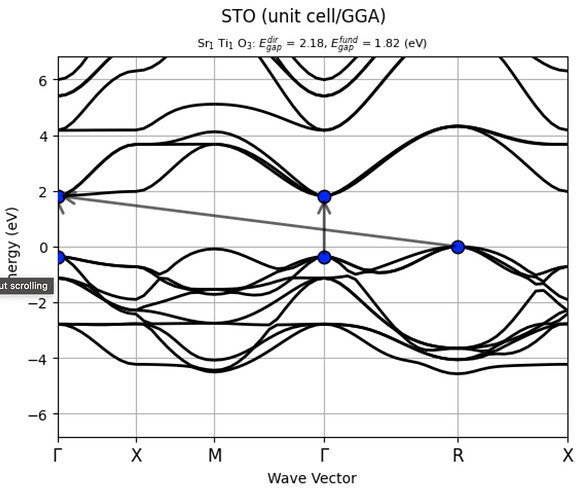Dear Users,
I am trying to calculate the EBS of a cubic perovskite supercell (2x2x2 cubic STO). The geometry information can be found on the MP here. I need the supercell to simulate a doped system.
I have followed the abinit documentation regarding the supercell of Hydrogen here and the unfolding of the Brillouin zone here, although I find it not complete.
I start from the standard k-path for a cubic structure in the primitive cell.
kptopt2 -5
kptbounds2
0.0 0.0 0.0 # Gamma
0.0 0.5 0.0 # X
0.5 0.5 0.0 # M
0.0 0.0 0.0 # Gamma
0.5 0.5 0.5 # R
0.0 0.5 0.0 # X
I have tried several paths, such as the following, trying to include all the “half” points and making sure to substitute G->X with -X/2->G->X/2 and I get a bunch of spikes.
kptopt2 -9
kptbounds2
-0.25 -0.25 0.0 # -M/2
0.0 -0.25 0.0 # -X/2
0.0 0.0 0.0 # Gamma
0.0 0.25 0.0 # X/2
0.25 0.25 0.0 # M/2
0.0 -0.25 0.0 # -X/2
-0.25 -0.25 -0.25 # -R/2
0.0 0.0 0.0 # Gamma
0.25 0.25 0.25 # R/2
0.0 0.25 0.0 # X/2
Could it be that this is still incomplete and I am missing points such as 0.25 0.5 0.0 and 0.5 0.25 0.0 for M and 0.5 0.25 0.25 for R (etc…?).
Is there any automatic tool to produce the kpt path?

Thank you
Marco
